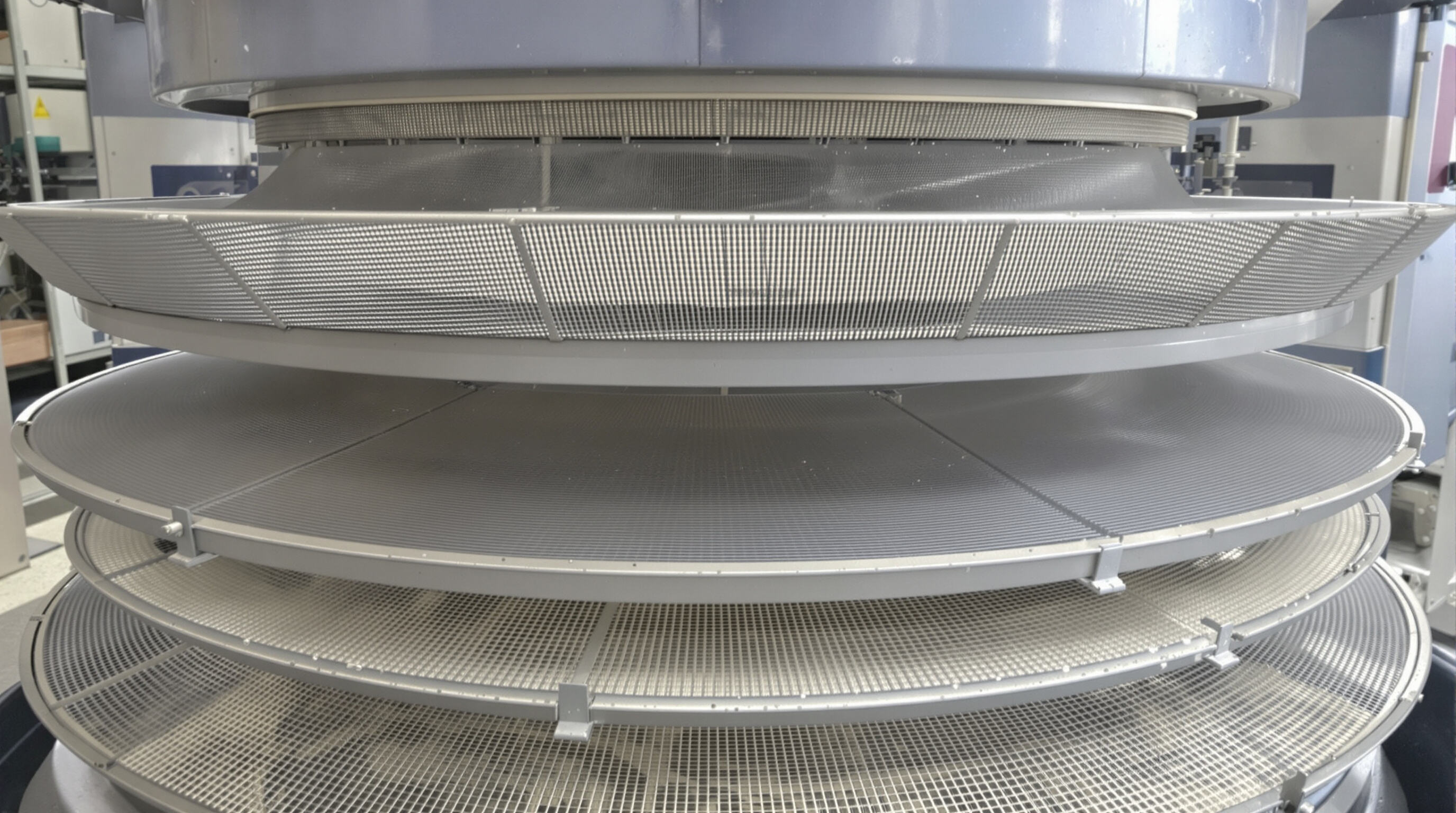Understanding the Swing Screen Machine: Design and Core Functionality

Definition and Core Function of the Swing Screen Machine
Swing screen machines work by sorting granular materials based on their size through mechanical movement. What sets them apart from regular vibrating screens is their use of slow, elliptical movements that separate materials without breaking them down as much. These screens typically have between one and four layers, allowing operators to sort several different sizes at once. Industrial versions can handle around 300 tons per hour, though this number changes depending on how dense the material is and what size openings are used in the screen. Many top manufacturers focus on making these systems work better with tricky materials such as certain pharmaceutical powders or plastic pellets, which tend to stick together or get damaged when run through standard screening equipment.
How Swing Screen Machine Technology Differs from Traditional Vibrating Screens
Swing screen machines replace high-frequency linear vibrations with a unique elliptical motion profile (4–12 Hz frequency, 5–20 mm amplitude). This results in three critical advantages:
- Material Preservation: Delicate crystals or polymers experience 30–50% less mechanical stress compared to linear vibrating screens
- Reduced Clogging: Particles slide through mesh openings at shallow angles, lowering blinding risks by 60–85% in moist materials
- Extended Screening Path: The spiral material trajectory increases residence time by 2–3, improving separation accuracy
This technology proves particularly effective for lightweight or flaky materials prone to static buildup or vertical mesh penetration.
Key Design Features That Enhance Material Separation Efficiency
Modern swing screen machines incorporate three innovation pillars:
- Self-Cleaning Mesh Systems: Rubber-ball cleaners or ultrasonic vibration nodes maintain >95% mesh availability during operation
- Precision Motion Control: Variable-frequency drives allow real-time adjustment of oscillation patterns to match material characteristics.
Principles of Motion: Elliptical Oscillation and Low-Frequency Vibration
Swing screen technology, using elliptical oscillation and low-frequency vibration, is vital for preserving material integrity and improving separation accuracy. The spiral material trajectory increases residence time by 2–3 times, ensuring delicate materials remain intact while minimizing blinding risks, particularly in moist conditions.
Reducing Blinding, Pegging, and Carry-Over with Swing Screen Technology
Swing screen technology effectively mitigates blinding, pegging, and carry-over issues. Materials move horizontally across the screen, which reduces the risk of clogging and improves material flow efficiency. As a result, operators encounter fewer disruptions and achieve a 40% reduction in downtime due to clogging. The self-cleaning mechanism helps maintain consistent performance, even when handling sticky materials.
Field Data: 40% Reduction in Downtime Due to Clogging After Swing Screen Machine Installation
With the installation of swing screen machines, one cement factory experienced a remarkable 40% reduction in downtime caused by clogging. The combination of automated tensioning systems and predictive wear analytics reduced screen replacement cycles from 14 to 26 weeks, resulting in significant annual cost savings of $218,000 due to improved efficiency and reduced maintenance needs.
Swing Screen Machine vs. Linear Vibrating Screens in Industrial Applications
When it comes to dealing with tough stuff like wet or sticky aggregates, swing screen machines significantly outperform linear vibrating screens. The unique motion of swing technology notably reduces issues such as blinding and pegging and increases throughput in mineral processing by 15 to 30 percent compared to traditional methods. This makes them particularly valuable in operations where material consistency is crucial.
Innovations in Swing Screen Machine Design to Prevent Clogging and Downtime
IoT Sensors and Next-Gen Monitoring in Swing Screen Machines
Today's swing screen machines come with IoT sensors which offer real-time monitoring, thereby enhancing process accuracy by improving throughput by about 22%. These sensors measure energy consumption, component wear, and other metrics, allowing operators to make real-time adjustments and reducing false alarms by 18%. Automated systems like tension adjusters and lubrication units keep operations running even during intensive processing periods.
Field Data: 40% Reduction in Downtime Due to Clogging After Swing Screen Machine Installation
Modern telemetry setups look at past performance numbers to spot potential component failures anywhere from 8 to 12 weeks in advance. During intense periods of processing large volumes of materials, this system sends out maintenance warnings based on current mismatches (with measurements down to +/- 0.5 amps). This method effectively decreases unexpected production halts and extends the longevity of the equipment.
Conclusion
Swing screen machines offer great improvements in screening efficiency, particularly in industries dealing with delicate or cohesive materials. Technological advancements like IoT sensors and automated cleaning systems further enhance their performance, offering businesses a way to reduce clogging, increase throughput, and cut downtime. For industries dealing with minerals, food processing, and pharmaceuticals, these machines represent a valuable investment in better product quality and operational efficiency.
FAQ
What is a swing screen machine?
A swing screen machine is used for sorting granular materials by size through mechanical movement, utilizing slow, elliptical motions that offer effective separation with reduced stress on materials.
How does a swing screen machine differ from a traditional vibrating screen?
In contrast to high-frequency linear vibrations used by traditional vibrating screens, swing screen machines use elliptical movements. This approach results in better material preservation, reduced clogging, and improved separation accuracy.
What are the key benefits of using a swing screen machine?
Swing screen machines provide several advantages, including less mechanical stress on materials, reduced blinding, and increased throughput and accuracy.
How do IoT sensors enhance swing screen machine performance?
IoT sensors in swing screen machines provide real-time data to operators, enabling them to make dynamic adjustments and optimize screening efficiency. This technology can reduce energy consumption and maintenance costs while improving throughput accuracy.

